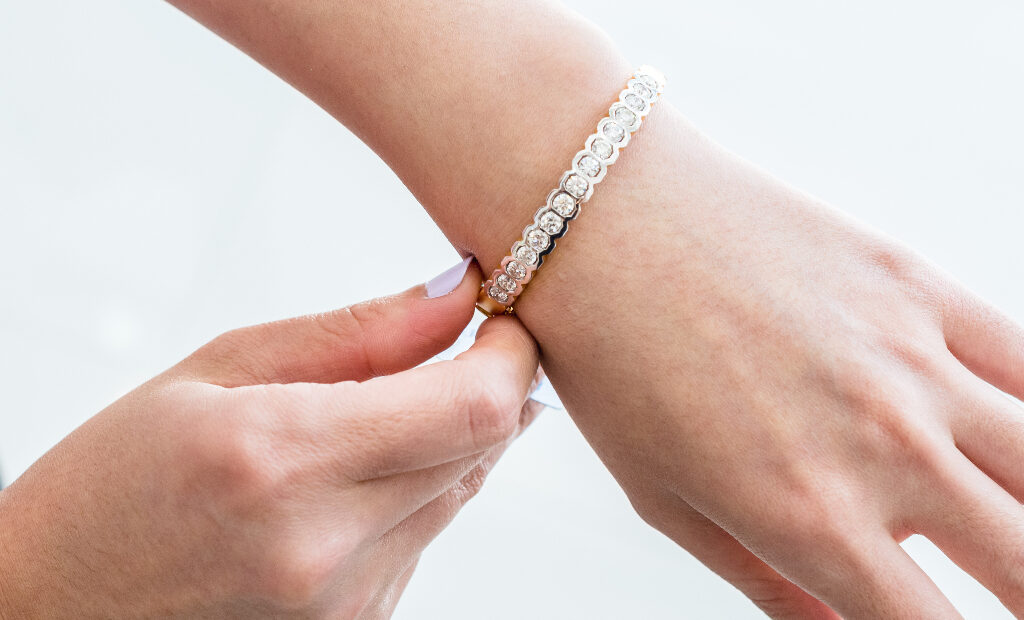The ultimate guide to shopping for tennis bracelets

Tennis bracelets have been gaining high popularity in the diamond and jewellery industry for over two decades now. This type of bracelet is usually characterised as one which has a single row or loop of diamonds, but there are also some designs that have a row of two or three layers. It’s all up to you what design you prefer to have for your tennis bracelet.
Perhaps you may also come to ask how the tennis bracelets first come into being. This goes back to around 1987 when a tennis player, Chris Evert, lost her diamond bracelet during a match in the US Open. The match was stopped, so she could search for her diamond bracelet—something which was so big that this search was even televised, hence the coming to name of what’s known today as a tennis bracelet.
This isn’t to say, however, that only tennis players can use one. Anyone can walk into a diamond jewellery store and request to look at tennis bracelets. Because it’s an investment piece, you’ll want to be certain you’re choosing a good one, perhaps even something you can wear daily.
Learn how to determine the right tennis bracelet sizing
Tennis bracelet sizes don’t matter as much as they would for rings, but it’s always a good idea to get the closest fit to your wrist as possible. Don’t make it too loose, otherwise you could risk losing the bracelet. Don’t make it too tight as well, else it’ll lose its unique characteristic as a tennis bracelet.
There’s no strict rule to follow with this as the sizing will always depend on your wrist size. The best individual to help you out with sizing would be the sales representative of the jeweller you’re buying your tennis bracelet from.
Choosing the diamond colour matters as well
When you search for tennis bracelet designs, you may notice that the classic designs are those diamonds that are colourless. You can still further narrow it down, however, based on your tennis bracelet’s diamond colour grade. Pamper yourself with that perfect diamond bracelet for your taste and preference. Here’s how:
- D, also known as the perfect colourless diamond. This is the highest colour grade given to a colourless diamond, but is also extremely rare.
- E-F, referred to as colourless. Like D, it’s a rare type with only expert gemmologists capable of distinguishing the minute colour traces present in this type.
- G-H, or the near colourless diamond. The colour of this type can only be distinguished when placed side by side with the colourless diamond, or those under E to F.
- I-J, or near colourless. This type of diamond colour may appear to be yellow. It’s easy to distinguish, even unaided, by the naked eye.
- K-Z, known as a noticeable colour. This is the poorest colour grade for a diamond, characterized as one which is also visibly yellow.
Choose according to how you plan to accessorise your tennis bracelet
Like other jewellery pieces, choosing the right tennis bracelet is a matter of preference. Hence, a good way to choose is to select one according to how you plan to wear or accessorise your tennis bracelet. Here are a few options to consider:
- If you plan to wear the tennis bracelet alone on most days, then that’s when you can opt for those with multiple layers. This type of styling is great for the summer months and when you’re wearing short sleeves.
- If you plan to wear the tennis bracelet with a watch, then choose a simple one, usually a single-layer eternity tennis bracelet.
- If you want to wear your bracelet with other jewellery pieces, choose earrings and necklaces that are more muted and simpler to style. Tennis bracelets aren’t meant to be overbearing. So, you wouldn’t want to lose its classic elegance by over-adorning it with big loud earrings and necklaces.
Choosing a tennis bracelet based on how you intend to wear can help you choose one that’ll truly match your style and personality. If not, you may wind up with a tennis bracelet that you’ll simply be uncomfortable wearing. It’s meant to have its share of days and exposure on your wrist – not kept secure in a jewellery box.
Look for the different types of settings
Yes, tennis bracelets also have different setting types. The diamonds are usually round, but you’ll also find those which may have a princess cut or emerald cut.
As to the setting, you’ll usually have three setting types to choose from: bezel, prong, and channel. Each type still does its job well of holding all the diamonds in place. But the overall feel and look of the bracelet depends on how the stone is actually held.
The main types of settings you can choose from are characterised as follows:
- In this type of setting, there are three to four prongs per diamond designed to hold each piece. It’s very secure but still allows light to pass through each diamond.
- This type of setting is characterised as one which has a piece of metal surrounding each stone.
- In this setting, two thin rows of metal hold the stone on either side, placing the diamond perfectly in the middle. This helps ensure that the diamonds fit tightly to each other.
There are different metal colours to choose from
With tennis bracelets, it’s not just the colour of the diamond that you can choose. You can also find the perfect one for you according to the type and colour of the metal you prefer.
For instance, some of you might prefer a yellow gold tennis bracelet. These are unique, but not the common type of tennis bracelet. If you want to go for the usual, classic one, white gold is always the way to go.
Final shopping tips
The tennis bracelet is a classic and iconic piece that can truly accessorise any style, be it casual or formal. Despite wearing an all-diamond piece, it’s not too overbearing for it to make you look overdone. Tennis bracelets have that hint of elegance that’s just right for any woman. Now that you have this guide to help you out, all that’s left to do is to start searching for and shopping for that perfect one for you. Diamonds are always a good investment, and it’s never too early to treat yourself to one.
The editorial unit
























Facebook
Twitter
Instagram
YouTube
RSS